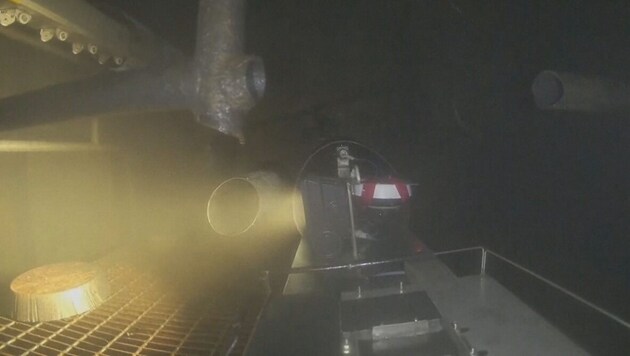Fukushima anniversary
Drone video shows the inside of the ruined reactor
Thirteen years after the super-GAU at the Fukushima Daiichi nuclear power plant - Monday was the anniversary of the disaster - the operating company TEPCO is still working on recovering the fuel rods that melted in the process. To gain an overview, a drone was recently sent into the ruins of the reactor (see video above).
Just recently, a mini drone the size of the palm of a hand was sent into one of the damaged reactor blocks of the stricken nuclear power plant. The images taken (see video above) are intended to help examine the fuel residues that are to be recovered.
According to the AP news agency, there are four drones of the same design, which are around the size of the palm of your hand and weigh just 185 grams each. They are said to be particularly maneuverable, but hardly stir up any dust during flight. They are equipped with a high-resolution camera that transmits live images to TEPCO's operations center.
As a reminder, a strong earthquake and a resulting tsunami led to the explosion of four reactors in the inadequately secured Fukushima nuclear power plant in 2011, resulting in core meltdowns in three of them, with around 880 tons of fuel rods melting through reactor pressure vessels and solidifying into highly radioactive lumps. The actual clean-up work has not yet begun ...
What is a super-GAU?
A super-GAU is an accident that goes beyond the worst-case scenario (worst-case accident, abbreviated GAU) for which a nuclear power plant was designed. Radioactive radiation is released and the environment is contaminated. The word part "super" corresponds to the Latin word meaning "beyond ... beyond".
100,000 liters of radioactively contaminated water every day
Around 100,000 liters of radioactively contaminated water are produced every day at the Fukushima nuclear power plant to cool the core meltdown. Since last year, the operating company TEPCO has been allowed to discharge the water contaminated with tritium (a radioactive isotope of hydrogen) into the sea. This is being done in the face of protests from environmentalists around the world.
Super-GAU causes horrendous follow-up costs
The Japanese government puts the cost of the reactor accident at 223 billion US dollars (213 billion euros). However, there are other calculations, such as that of the Japan Center for Economic Research, which assumes costs of between 500 and 600 billion dollars (457 or 548 billion euros). There are also independent estimates that even speak of follow-up costs of more than 719 million dollars (657 billion euros).












Kommentare
Willkommen in unserer Community! Eingehende Beiträge werden geprüft und anschließend veröffentlicht. Bitte achten Sie auf Einhaltung unserer Netiquette und AGB. Für ausführliche Diskussionen steht Ihnen ebenso das krone.at-Forum zur Verfügung. Hier können Sie das Community-Team via unserer Melde- und Abhilfestelle kontaktieren.
User-Beiträge geben nicht notwendigerweise die Meinung des Betreibers/der Redaktion bzw. von Krone Multimedia (KMM) wieder. In diesem Sinne distanziert sich die Redaktion/der Betreiber von den Inhalten in diesem Diskussionsforum. KMM behält sich insbesondere vor, gegen geltendes Recht verstoßende, den guten Sitten oder der Netiquette widersprechende bzw. dem Ansehen von KMM zuwiderlaufende Beiträge zu löschen, diesbezüglichen Schadenersatz gegenüber dem betreffenden User geltend zu machen, die Nutzer-Daten zu Zwecken der Rechtsverfolgung zu verwenden und strafrechtlich relevante Beiträge zur Anzeige zu bringen (siehe auch AGB). Hier können Sie das Community-Team via unserer Melde- und Abhilfestelle kontaktieren.